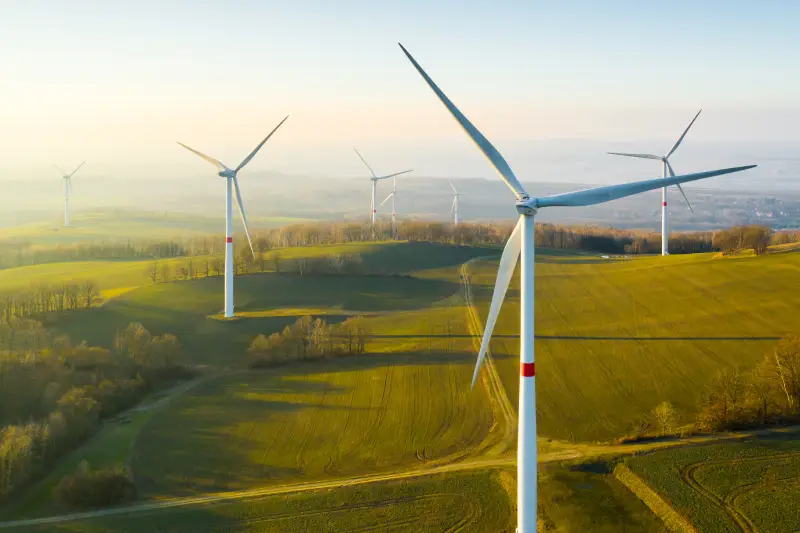
Mr. Electric explains how weather impacts energy usage and offers practical tips to manage consumption.
|
The relationship between weather and energy usage is a never-ending cycle. Spikes and drops in temperature and humidity lead to spikes and drops in energy use (and costs), which in turn correspond with spikes and drops in greenhouse gas emissions, further affecting climate. What does this relationship mean when it comes to your energy usage?
Running at Maximum Capacity
Temperatures above 100 and below 40 stress your heating and cooling system, pushing it to capacity, reducing efficiency, and draining energy supplies, along with your wallet. Quite simply, this amounts to less bang for your buck in terms of comfort. Add to temperature issues, wind, cloud cover, and precipitation and the snowball effect continues, further impacting comfort levels, not to mention your ability to illuminate interior spaces. Compound the issues – and the population affected – and you’ve got grid strain to boot.
The Worst Offenders
Heat
- The problem: Spikes in the mercury lead to peaks in electricity use as cooling demands rise with temperature. So much so those demands can account for up to 50 percent of your bill.
- The solution: Save energy by switching your AC’s fan setting to “auto” and your thermostat to 78 F and 82+ when you leave your home for any length of time. Or, make life easier by upgrading to a programmable thermostat. In addition, boost efficiency by cleaning or replacing the air filter monthly.
Cold
- The problem(s): Portable heaters and strip heaters are among the highest sources of electricity demand during periods of extreme cold, straining your wallet and the electrical grid. Wind, ice and snow can also worsen grid problems, breaking lines. Heating oil and natural gas prices also peak during this time as well, due to increased demand.
- The solution: Building an airtight, properly insulated structure and dressing appropriately to start with, and using portable heaters wisely. Heat only occupied rooms with a portable heater in combination with lowering your thermostat temperature to avoid heating unoccupied spaces.
Humidity
- The problem: Moisture in the air makes you feel warmer, causing you to lower the thermostat in an effort to stay comfortable. This causes your air conditioner to run longer and increases energy usage.
- The solution: Ceiling fans can help you feel cooler with far less energy usage than your air conditioner. They can also help maintain winter comfort as well.
What does this mean for the environment and climate?
That depends on the source of energy. In the US, 83 percent of energy usage comes from fossil fuels, which release gases such as CO2 into the environment during the creation of energy. Unfortunately, these gases trap heat in the atmosphere. Atmospheric greenhouse gases have increased 30 percent since the pre-Industrial Revolution era alone, and the level continues to rise with energy demand. As levels increase, so does the effect on the environment. Thousands of scientists agree the trapped gases are currently affecting the climate, and will increasingly weigh on it as time goes on. This has resulted in an increase in interest in cleaner forms of energy, including nuclear, solar, wind, and geothermal.
The Ugly Stats
- 2009 estimates indicate the US consumed 94.6 quadrillion (946,000,000,000,000,000) British Thermal Units (BTUs) of energy.
- One quadrillion BTUs is referred to as a quad. One quad equals about 300 billion-kilowatt hours of power.
- Residential and commercial building sectors combined account for 40 quad of this use, and have the greatest climate and weather related fluctuations in energy use.
- Of the 25 quads of raw energy used to generate electricity, 16 of them are completely lost in energy conversion and transfer.
- Weather related energy usage is also impacted by sector:
- Residential: 58 percent of energy is used for heating and cooling. A 1.6 F increase in average winter temperature decreases space heating needs 6-10 percent. A 1.6 F drop in the summer decreases cooling needs 5-20 percent.
- Commercial: 40 percent of energy is used for heating and cooling, with similar savings to residential energy usage with temperature changes – 7.4-9 percent and 9.4-15 percent, respectively.
- Industrial: In industrial settings, there is a weak relationship between temperature and energy usage, though some sectors may be affected.
- Transportation: Running the air conditioner reduces fuel efficiency 12 percent. Additionally, temperature changes effect the energy required to keep foods cool – an extra 26-32 million barrels of diesel per year.
- Agriculture: Warmer temperatures affect evaporation rates and irrigation needs, with a significant fraction – 9 percent – of electricity load used for irrigation in some areas. Livestock may also require the use of electricity for heating and cooling.
What can I do to reduce my energy usage?
- Install a programmable thermostat.
- Have your HVAC system professionally maintained annually.
- Change your air filter every 3 months.
- Seal air leaks around windows, doors, ducts, chimneys, outlets, and cables.
- Consider upgrading windows.
- Install adequate insulation.
Watts up with your energy usage or need an electric vehicle charger installation? Mr. Electric® can help you find ways to save. Contact Mr. Electric today!

